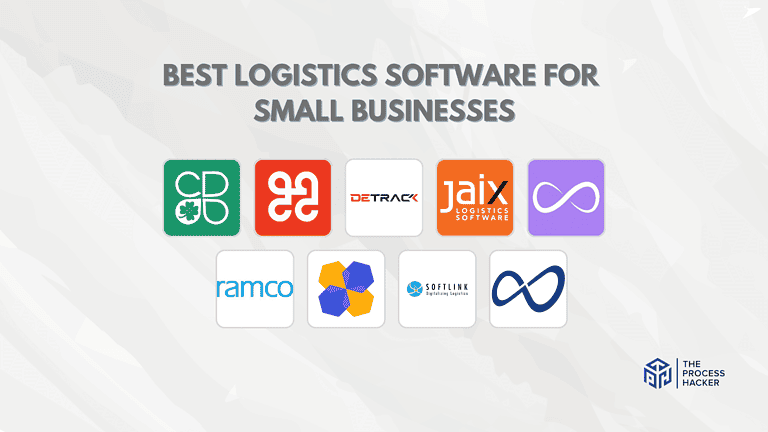Cloud Migration as a Small Business Modernization Strategy
If your small business is still storing data on local servers tucked away in a dusty back office, it may be time to consider a move to the cloud.
While the tried and true server under the desk served you well for many years, today’s always-on digital world demands more flexibility and scalability than those trusty yet aging machines can offer.
The cloud provides a way to modernize your IT infrastructure and position your business for continued growth and success in a rapidly changing technological landscape. Moving to the cloud doesn’t need to be an intimidating overhaul, either—done right, it can seamlessly improve business processes across your organization with minimal disruption.
In this post, we’ll examine why cloud migration is a good option for small businesses today and how to make the shift to take advantage of the cloud’s many benefits for both your bottom line and your customers.
What is Cloud Migration?
Cloud migration involves moving data, applications, and other business elements from on-premises infrastructure to a cloud computing environment. The cloud migration process can also include transferring data and applications between different cloud services, such as from one cloud provider to another or from a public cloud to a private cloud.
For businesses working with a software modernization company, cloud migration is often a critical component of modernizing IT infrastructure. Check out the key components of cloud migration.
Rehosting
Also known as “lift and shift,” this involves moving applications to the cloud without significant changes. It is often the quickest and least complex migration approach, allowing businesses to achieve immediate benefits of cloud infrastructure without altering the existing architecture.
Replatforming
This involves making a few optimizations to take advantage of the cloud platform. While applications are not completely redesigned, certain modifications are made to improve performance and efficiency in the cloud. For example, optimizing databases or leveraging cloud-based storage solutions can enhance scalability and reduce costs.
Refactoring
This approach entails rebuilding applications to be cloud-native, utilizing cloud features and services fully. Refactoring involves redesigning and redeveloping applications to exploit the cloud’s capabilities, such as auto-scaling, load balancing, and serverless computing. This can lead to greater efficiency and performance but requires more time and resources.
Here’s what you need to know:
- Cloud-Native Design: Refactoring involves redesigning your applications to be “born in the cloud.” This means architecting them to take advantage of cloud-specific capabilities like:
- Auto-scaling: Automatically adjust resources based on demand to ensure optimal performance, even during peak times.
- Load balancing: Distribute incoming traffic across multiple servers to prevent bottlenecks and improve responsiveness.
- Serverless computing: Run code without managing servers, paying only for the compute time you use.
- Benefits:
- Improved Performance: Refactored applications often experience significant performance gains due to optimized cloud architecture.
- Increased Scalability: Cloud-native design allows your applications to handle fluctuating workloads with ease.
- Cost Efficiency: You can potentially reduce costs by leveraging serverless technologies and auto-scaling features.
- Considerations:
- Complexity: Refactoring requires a deeper understanding of cloud architecture and development practices.
- Time and Resources: It’s a more involved process compared to other cloud migration strategies, demanding additional time and development resources.
- Disruption: Refactoring may involve temporary downtime or application adjustments during the transition.
Example: Imagine a traditional e-commerce application struggling to handle traffic spikes during holiday sales. Refactoring this application for the cloud could involve adopting a microservices architecture, using auto-scaling to manage traffic surges, and implementing serverless functions for order processing. The result is a more resilient and cost-effective application that delivers a seamless shopping experience, even under heavy load.
Data Migration
Data migration, the cornerstone of the process, entails transferring all your valuable information from local storage to cloud storage solutions. This ensures data integrity and security throughout the move.
You’ll gain peace of mind knowing your critical files are protected from hardware failures, natural disasters, and unauthorized access. Plus, you’ll unlock the power of on-demand scalability, effortlessly adapting to your changing storage needs as your business grows.
Application Integration
Migrating to the cloud is a comprehensive strategy that goes beyond merely transferring data. It’s about creating a cohesive and efficient digital ecosystem where all your business applications work together seamlessly.
Application integration plays a pivotal role in this process, ensuring that once your applications are moved to the cloud, they can communicate and function harmoniously with both cloud-native services and any existing on-premises systems you may continue to use.
Here are the essential aspects of application integration during cloud migration:
- Seamless Communication: Effective application integration allows for smooth data exchange between various software applications, whether they are in the cloud or still part of your legacy systems. This means that your sales, customer service, finance, and other critical business applications can share information in real-time, eliminating data silos and enhancing operational efficiency.
- Process Automation: With integrated applications, you can automate workflows that span multiple systems. This automation reduces manual effort, minimizes the risk of errors, and accelerates business processes. For example, an order placed on your e-commerce platform can automatically trigger inventory checks, initiate the fulfillment process, and update your accounting software, all without manual intervention.
- Enhanced Collaboration: Application integration enables better collaboration across your organization. Employees can access the same up-to-date information from different departments, making it easier to coordinate tasks, share insights, and make informed decisions. This interconnected environment fosters a more agile and responsive business operation.
- Flexibility and Scalability: As your business grows, the need to integrate additional applications or scale existing ones becomes inevitable. Cloud-based integration solutions are designed to be flexible, allowing you to easily add new cloud migration tools or scale existing ones without disrupting your operations. This ensures that your technology infrastructure can grow alongside your business.
- Improved Customer Experience: By integrating your customer-facing applications with backend systems, you ensure a consistent and efficient experience for your customers. Whether it’s processing orders, managing customer inquiries, or providing personalized services, integrated applications help you deliver high-quality service that meets customer expectations.
Incorporating robust application integration into your cloud migration strategy ensures that your business operates smoothly in a modern digital environment. This not only preserves productivity but also enhances it, positioning your business to excel in a competitive landscape.
Security and Compliance
Security is non-negotiable. Your business’s digital assets are invaluable, and cloud migration doesn’t change that. It’s critical to implement rock-solid protection for your data and applications at every step – both during and after the move.
Here’s a breakdown of what that means:
- Regulatory Compliance: Every industry has its own set of rules. You need to stay on top of them, even when you migrate to the cloud. Make sure the cloud provider you choose helps you meet these specific standards.
- Data Encryption: Protect sensitive information by ensuring it’s encrypted both when it’s stored and when it’s being transmitted.
- Access Controls: Limit who can see and change what. Robust user authentication and authorization mechanisms are essential to keep your data safe from prying eyes.
- Provider Security: Not all cloud providers are created equal. Dig deep into their security policies and practices. Ask about certifications, on-premises data center security, and incident response procedures.
- Ongoing Monitoring: Cloud environments can change rapidly. It’s vital to have systems in place to constantly monitor for threats and vulnerabilities.
Security in the cloud is a shared responsibility. It’s a partnership between you and your cloud provider. Choosing a provider that prioritizes security and compliance will make all the difference in protecting your business and your customers’ data.
Change Management
Migrating to the cloud involves more than just technology. It also impacts how your teams work.
Change management is about addressing those organizational shifts and providing the necessary training to help everyone adapt to new cloud technologies and workflows. When you invest in effective change management, you’re minimizing disruptions and paving the way for a smooth transition to the cloud environment.
Why is Cloud Migration Beneficial?
Cloud migration can significantly reduce hardware and maintenance costs. Companies no longer need to invest in physical servers or worry about the upkeep of data centers.
Additionally, with front-end development services, cloud migration can streamline workflows and improve collaboration.
Offers Scalability
One of the most appealing aspects of cloud services is the ability to scale resources effortlessly. As your business grows and demands fluctuate, you can easily adjust your cloud infrastructure to match, ensuring you’re never paying for more than you need or struggling to handle unexpected traffic spikes.
Think of it as having a virtual IT department that can expand or contract on demand, providing the agility needed to navigate the ups and downs of the market.
Enhances Business Operations
The cloud opens up a whole new world of possibilities for your business. You gain access to a wide array of cutting-edge services and tools that can significantly enhance your operations.
This could include anything from powerful analytics platforms to advanced AI and machine learning capabilities. By harnessing these technologies, you’ll gain deeper insights into your data, make more informed decisions, and automate routine tasks, ultimately boosting productivity and efficiency across the board.
Offers Data Backup and Recovery
Data loss can be a nightmare for any business, but with cloud platforms, you gain a powerful safety net. Cloud providers typically offer robust data backup and recovery options, ensuring business continuity even in the face of unexpected events like hardware failures, natural disasters, or even accidental deletions.
You’ll have the peace of mind of knowing that your critical information is securely stored and readily available for retrieval whenever you need it.
Facilitates Remote Work
In today’s increasingly connected world, enabling your team to work seamlessly from anywhere is essential. Cloud migration can be a key enabler of remote work and global collaboration.
By providing easy access to data and applications from any location with an internet connection, you empower your team to stay productive and connected, no matter where they are.
Provides Advanced Security
When you migrate to the cloud, you’re not just entrusting your data to any old server. Major cloud providers invest heavily in advanced security features and obtaining compliance certifications.
Often, they offer a level of protection that far surpasses what many companies can achieve with their own on-premises infrastructure. It’s like upgrading your security system from a basic lock to a state-of-the-art, multi-layered defense system.
How to Successfully Do Cloud Migration?
So, you’ve decided to migrate your business operations to the cloud. Here is a step-by-step guide to ensure a successful migration:
#1) Assessment
Cloud migration isn’t a one-size-fits-all process. Every business is unique, and your migration journey needs to start with a thorough understanding of where you are today.
Think of it as mapping out the terrain before you embark on a hike. You need to know the starting point, the destination, and the potential obstacles along the way.
Here is a breakdown of what an assessment entails:
- Inventory Your IT Assets: Take stock of all your applications, data, and infrastructure. This includes everything from on-premises servers and databases to software licenses and network configurations.
- Identify Dependencies: Understand how different components of your IT infrastructure interact. Pinpoint any critical dependencies that could complicate the migration.
- Evaluate Cloud Readiness: Assess the compatibility of your existing applications and data with cloud environments. Some may need adjustments or refactoring before they can be migrated smoothly.
- Define Business Objectives: Clearly articulate what you hope to achieve with cloud migration. Are you looking for cost savings, improved performance, scalability, or all of the above?
- Consider Compliance Requirements: If your industry has specific regulations around data storage or security, factor them into your migration plan.
#2) Planning
Once you’ve got a clear picture of your current IT landscape, it’s time to create your roadmap to the cloud. A well-structured migration plan acts as your compass, guiding you through every step of the journey. It helps you stay on track, anticipate challenges, and ensure a smooth transition.
Here’s what your plan should cover:
- Decide which approach best fits your needs and goals. Are you going for a lift-and-shift (rehosting), refactoring, or a hybrid approach? Each has its pros and cons, and your choice will depend on your specific applications and requirements.
- Break down the migration process into phases and set realistic timelines for each. Consider factors like application complexity, data volume, and potential dependencies.
- Identify the people, skills, and tools needed to execute the migration successfully. This includes both internal teams and any external partners or consultants you might bring on board.
- Estimate the costs associated with the migration, including cloud infrastructure, licensing fees, data transfer, and any professional services.
- Identify potential risks and develop contingency plans to address them. Consider factors like data loss, downtime, and security breaches.
- Plan for thorough testing of your applications in the cloud environment before fully cutting over. This helps ensure a smooth transition and minimizes disruptions to your business operations.
- Keep stakeholders informed throughout the process. This includes both internal teams and any customers or partners who might be affected by the migration.
#3) Choosing a Cloud Provider
Selecting the right cloud provider is crucial. It’s like choosing a business partner—you want someone reliable, supportive, and aligned with your long-term goals. With so many providers and service options out there, it’s easy to feel overwhelmed. But don’t worry, we’ll guide you through the key factors to consider.
- Cost: Cloud pricing can be complex, with various pay-as-you-go and subscription models. Compare providers carefully, considering your expected usage and future growth. Look beyond the headline prices and factor in things like data transfer costs, storage fees, and potential discounts for long-term commitments.
- Security Features: Data security is paramount. Evaluate each provider’s security measures, including encryption, access controls, compliance certifications, and their track record for handling security incidents.
- Scalability: The cloud’s strength lies in its ability to scale up or down based on your needs. Ensure the provider you choose offers flexible scaling options to accommodate your business’s growth or seasonal fluctuations.
- Support Services: Even with the best technology, you’ll inevitably need assistance at some point. Look for providers with responsive customer support, comprehensive documentation, and training resources.
- Features and Services: Beyond the basics, consider additional features that might be important to your business, such as AI and machine learning capabilities, serverless computing options, or specialized industry solutions.
- Service Level Agreements (SLAs): Review the provider’s SLAs carefully, paying attention to guarantees around uptime, performance, and data recovery.
#4) Migration Execution
You’ve got your plan, you’ve chosen your provider – now it’s time for the actual move. Cloud migration execution is where the rubber meets the road. It’s about carefully transferring your applications and data to the cloud while minimizing disruptions to your business operations.
Think of it like moving to a new house. You wouldn’t just throw everything in a truck and hope for the best. You’d pack carefully, label boxes, and maybe even hire professional movers to ensure a smooth transition.
Here are some key principles to follow:
- Don’t try to move everything at once. Break down the migration into manageable phases, starting with less critical applications or data. This allows you to test the process, identify any issues early on, and refine your approach as you go.
- Before flipping the switch, test your applications extensively in the cloud environment. Ensure they function as expected, performance is satisfactory, and data integrity is maintained.
- Keep a close eye on performance and usage metrics throughout the migration and beyond. This helps you identify any bottlenecks or unexpected issues and take corrective action quickly.
- Keep your team informed about the migration progress and any potential impacts on their work. Provide training on new cloud-based tools and processes.
#5) Post-Migration Optimization
After completing the initial cloud migration to the cloud, the work doesn’t stop there. To fully leverage the benefits of the cloud, it’s essential to engage in post-migration optimization. This involves continuously monitoring the cloud environment to ensure that your applications and resources are running efficiently and cost-effectively.
Start by tracking key performance indicators (KPIs) to assess how well your cloud infrastructure is meeting business needs. This includes monitoring resource utilization, latency, application performance, and security metrics. Regularly analyzing these metrics allows you to identify any inefficiencies or bottlenecks that could impact performance.
Cost management is another crucial aspect of post-migration optimization. Cloud platforms often operate on a pay-as-you-go model, which can lead to unexpected expenses if not carefully managed. Regularly reviewing your cloud services, eliminating unused resources, and resizing instances to match your actual usage can prevent overspending. Implementing automation tools for scaling resources based on demand can further enhance cost efficiency.
Additionally, maintaining security is paramount. Continuously review and update security protocols to protect your data and applications from emerging threats. This involves not only monitoring for potential vulnerabilities but also ensuring compliance with industry regulations and standards.
Lastly, stay adaptable by refining your cloud architecture as your business evolves. As new technologies and services become available, integrate them to enhance functionality and performance. By committing to ongoing optimization, you ensure that your cloud environment remains aligned with your business objectives, delivering maximum value and supporting growth.
Cloud Migration Challenges
The process of migrating to the cloud can present various challenges that organizations need to be prepared for. These include the following:
Cost Management
The cloud offers the promise of cost efficiency, but it’s not always straightforward. Unexpected costs can creep in if you’re not diligent about monitoring and managing your cloud resources. It’s crucial to understand the pricing models of your chosen provider and optimize your usage to avoid surprises on your bill.
Downtime
Even with meticulous planning, some downtime during the cloud migration process is often inevitable. This can impact your business operations, so it’s important to schedule cloud migrations strategically, communicate clearly with stakeholders, and have contingency plans in place to minimize any negative impact on your customers and employees.
Data Security
Data security is a top priority, and the cloud is no exception. You need to be confident that your sensitive information is safeguarded both during and after the cloud migration. Choose a reputable cloud provider with robust security measures in place, and implement your own security protocols to protect your data at every stage.
Integration Issues
Integrating new cloud systems with your existing legacy applications can be tricky. Compatibility challenges can arise, potentially leading to delays and disruptions. Thorough planning and testing are crucial to ensure a seamless integration and avoid any surprises during the cloud migration.
Skill Gaps
Managing cloud infrastructure requires specialized knowledge and skills. If your team lacks expertise in cloud technologies, you’ll need to invest in training or consider partnering with experienced professionals to ensure a successful cloud migration and ongoing management.
Case Studies and Examples
Case Study 1: Netflix
Netflix successfully migrated to the cloud to handle its massive data and streaming requirements. The move allowed Netflix to scale quickly and handle peak traffic efficiently. The company leveraged the cloud’s advanced analytics and machine learning capabilities to enhance its recommendation system.
Case Study 2: GE
General Electric (GE) moved its entire IT infrastructure to the cloud, which resulted in significant cost savings and improved agility. The migration allowed GE to modernize its IT operations, leading to better performance and innovation.
Final Thoughts on a Successful Cloud Migration
So, there you have it—cloud migration is not just a trendy buzzword but a powerful tool that can transform your business.
By embracing the cloud, you can say goodbye to the outdated and costly on-premise infrastructure and hello to a modern, efficient IT ecosystem. But let’s not forget about the challenges that come with this transformation.
It’s important to carefully assess your current infrastructure, have a detailed cloud-to-cloud migration plan in place, and choose the right cloud provider for your specific needs. And let’s not stop there—continuous optimization is crucial for achieving long-term success in the cloud.
So, my friends, it’s time to strap on your digital backpacks and embark on this exciting journey towards a better future for your business.
Embrace change, embrace technology, and never stop improving – because that’s what being in the cloud is all about. Happy migrating!







